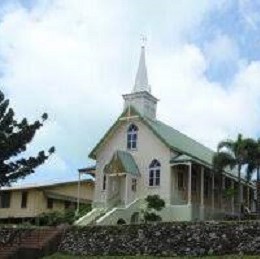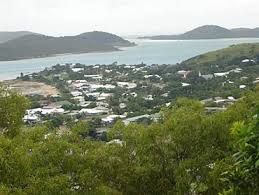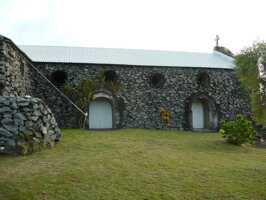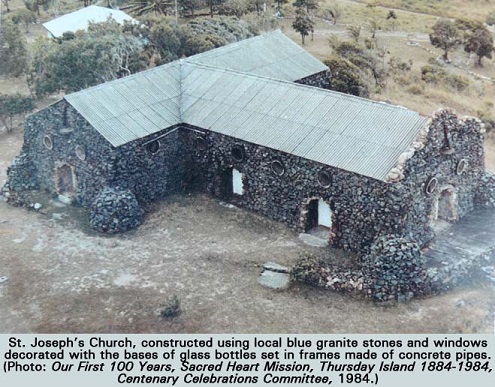Remembering MSC Mission in the Northern Territory and the Torres Strait Islands: Affirming NAIDOC Week.

Celebrating NAIDOC week, the first week in July, 2023 in this referendum year. This is important as we remember our mission in the Northern Territory from 1906. Mission on the Torres Strait Islands began earlier. A reminder from the website, Find and Locate. The acronym NAIDOC stands for National Aboriginals and Islanders Day Observance Committee
The MSC in Torres Strait
For details of MSC on mission in the Torres Strait, see Jim Littleton’s 2009 book on Mission in the Torres Strait. Here are some paragraphs from Googled articles.
The musically talented Fr. Joseph Guis (born at Auriol in 1869, died 1913) was stationed at Thursday Island, first to train cathechists for the Papuan mission, and later to train Sisters for aged care. Thursday Island counted as one of the islands in the vicariate of British New Guinea that Bishop Navarre administered until 1908. Its various Catholic institutions became an important presence in the poly-ethnic Thursday Island community, competing with the London Missionary Society that had made a promising start at Mer and Erub (Murray and Darnley Islands) in the Torres Strait.

After World War I the pearling industry and the importance of Thursday Island as an administrative centre declined and the MSC reached out to the Torres Strait islands. Thursday Island parish priest Fr. Jack Doyle erected a mission church on Naghir Island in 1935 and a mission for mixed descendants on Hammond Island (Keriri) in 1929. When Fr. Gsell MSC became bishop of Darwin in 1938, the Torres Strait mission was transferred from the Vicariate Apostolic of Papua to the diocese of Darwin, and therefore became part of the Australian MSC province. Just a few years later dramatic wartime evacuations of civilians from the north took place when 459 White, coloured and indigenous people from Thursday Island and Hammond Island were crowded into the Ormiston in 1942 and sent south, many of them to Cooyar. From German Missionaries in Australia, Griffith University, prepared by Regina Gantner.
St Henry's Roman Catholic Asylum, on Thursday Island, was an orphanage run by the Daughters of Our Lady of the Sacred Heart and the Missionaries of the Sacred Heart. It was part of the Sacred Heart Mission. The orphanage opened in 1889 and closed 1942 when the children were moved from Thursday Island to Cooyar Mission.

The orphanage, built by the missionary brothers, opened around June 1889. The Constitution, dated 20 June 1889, outlines the orphanage's purpose:
St Joseph's Roman Catholic Mission. The Hammond Island Mission Orphanage, on Hammond Island, was run by the Missionaries of the Sacred Heart. It opened in 1929 and closed in January 1942, when the residents were evacuated to Cooyar. A boys' dormitory housed the children. Hammond Island was originally declared a government reserve in 1881. The inhabitants were forcibly removed to Moa Island (also known as Banks Island) in 1922.

In 1929, Father Doyle from the Missionaries of the Sacred Heart, took about 15 'needy half-caste boys' from the Thursday Island Catholic Orphanage to establish an orphanage on Hammond Island. They were originally housed in a galvanised iron house near the beach. The Church had built a new boys' dormitory by 1932. The Mission's role was to care for half-caste orphan children and the children whose parents could not provide for them.
A convent was built in 1935 and two Sacred Heart Mission Sisters went to live there at the beginning of 1936. The Sisters took over the school and became responsible for the domestic management of the presbytery and the Orphanage. In September 1934 there were about 14 boys living in the boys' home. By September 1938, 10 boys were housed in the Orphanage, 6 of whom were identified as State Wards. In June 1939 there were 11 boys in the Hammond Island Orphanage.

In January 1942 all Hammond Island residents were evacuated to Cooyar, a small town north of Toowoomba. This included about 50 children aged between 8 and 15 years. They were accommodated in an old, vacant and de-licensed hotel. It became known as the 'Cooyar Mission', however correspondence about the Hammond Island Orphanage during the war years referred to it as the 'Hammond Island Institution - Cooyar'. The number of occupants began to decrease and the Mission at Cooyar closed in November 1944.
Although the prohibition on re-entry to Thursday Island was lifted in March 1946, the first families did not return to Hammond Island until July 1947. Within 12 months the Hammond Island Mission was functioning again with the local school re-opening in July 1948. There is no evidence that the Hammond Island Orphanage re-opened after the war.
St Joseph’s Catholic Church on Kiriri (Hammond Island) has a long history dating back to the early 1920s. At the time of its construction, the Sacred Heart missionaries were keen to expand their area of operations, especially in the context of the growth of population driven by such rapidly developing local industries as pearling.
Formal permissions were sought and granted in the late 1920s and the Sacred Heart missionaries began establishing themselves on the island. One of the first priorities was to construct a church and this was quickly undertaken by the first priest, Father McDermott, with the help of the local people. Opened in 1929, this first St. Joseph’s Church, as with other early mission buildings, relied heavily upon locally obtained materials. The floor was originally beaten earth, but wooden flooring was later added. The walls were of plaited coconut leaves and the roof was of corrugated iron sheeting. This first church served the community for many years, however the coming of the Second World War and the evacuation of Kiriri and other communities meant that the building was to deteriorate over time. By the end of the war, the building was in poor condition and it was said that even its bell had disappeared, presumed stolen. There were hopes that it could be repaired but this was not to be, mainly due to the building’s partial destruction by a severe cyclone in 1948.
A larger, replacement church was commenced in 1952 and completed in late 1953. This new church was a much larger and grander building than was its predecessor. Of steel framed construction, around 60,000 blocks of local bluestone granite were used with the new St. Joseph’s Church being formally consecrated in May 1954. From John Oxley Library, State Library of Queensland, 2018


